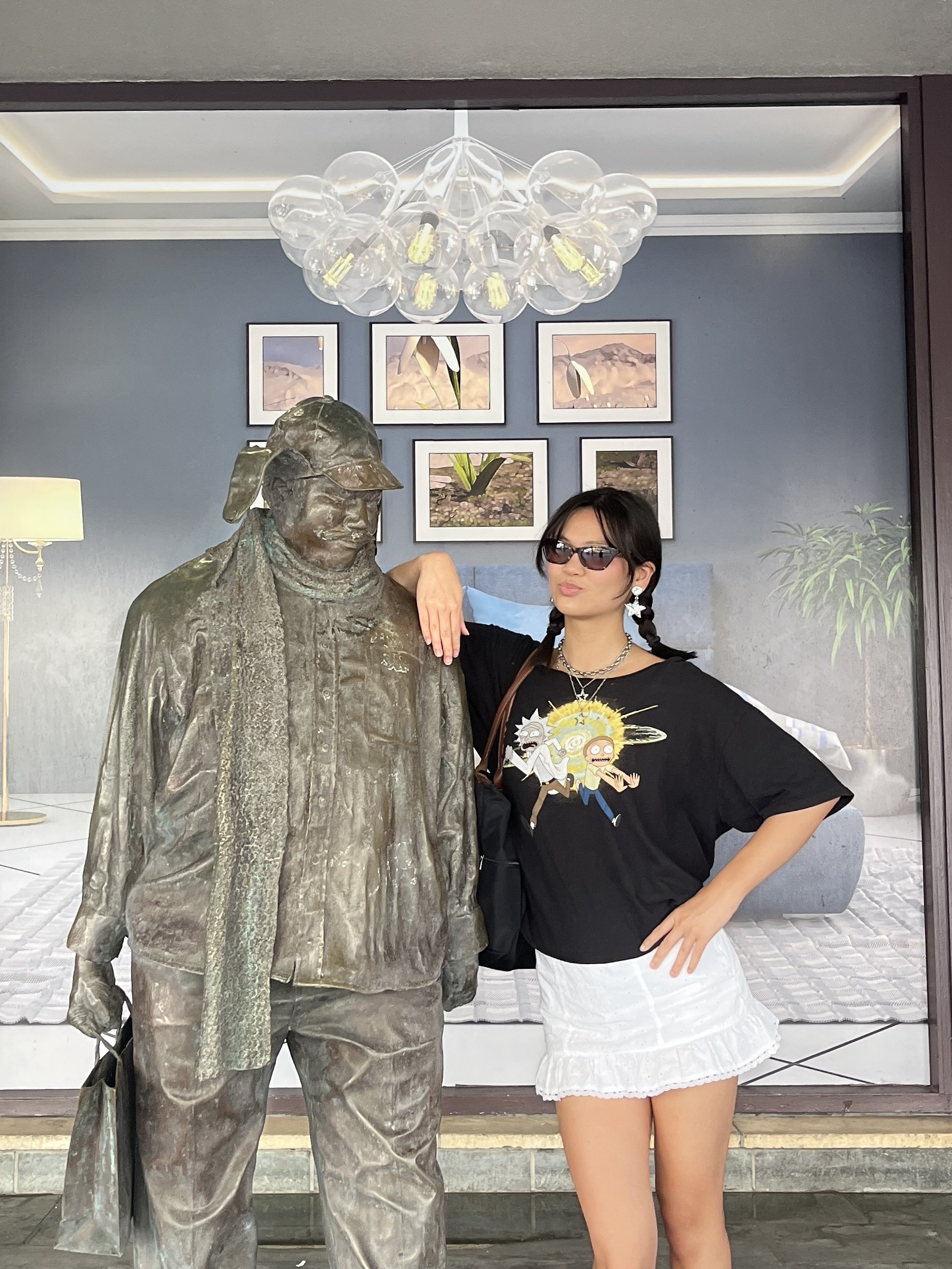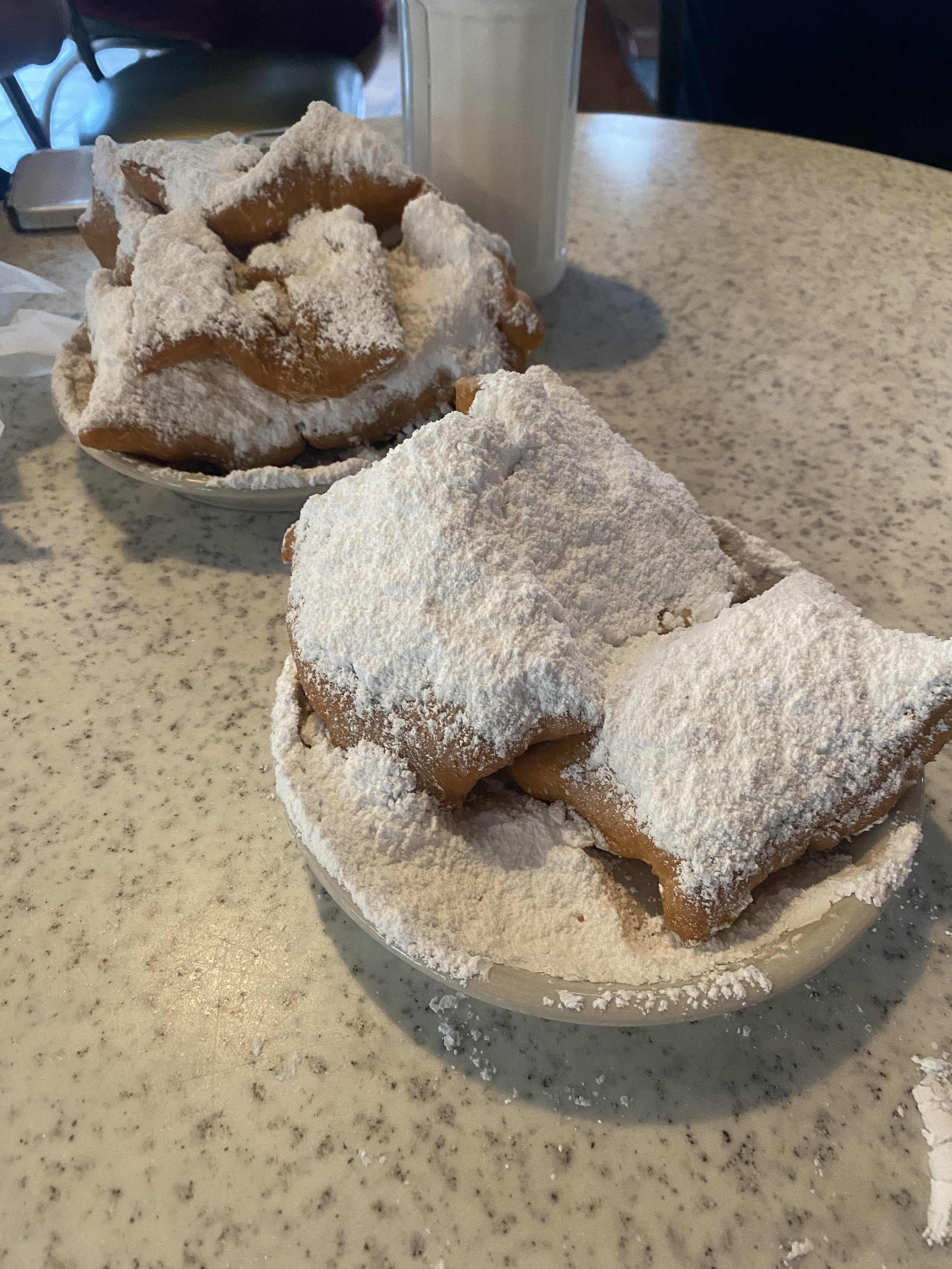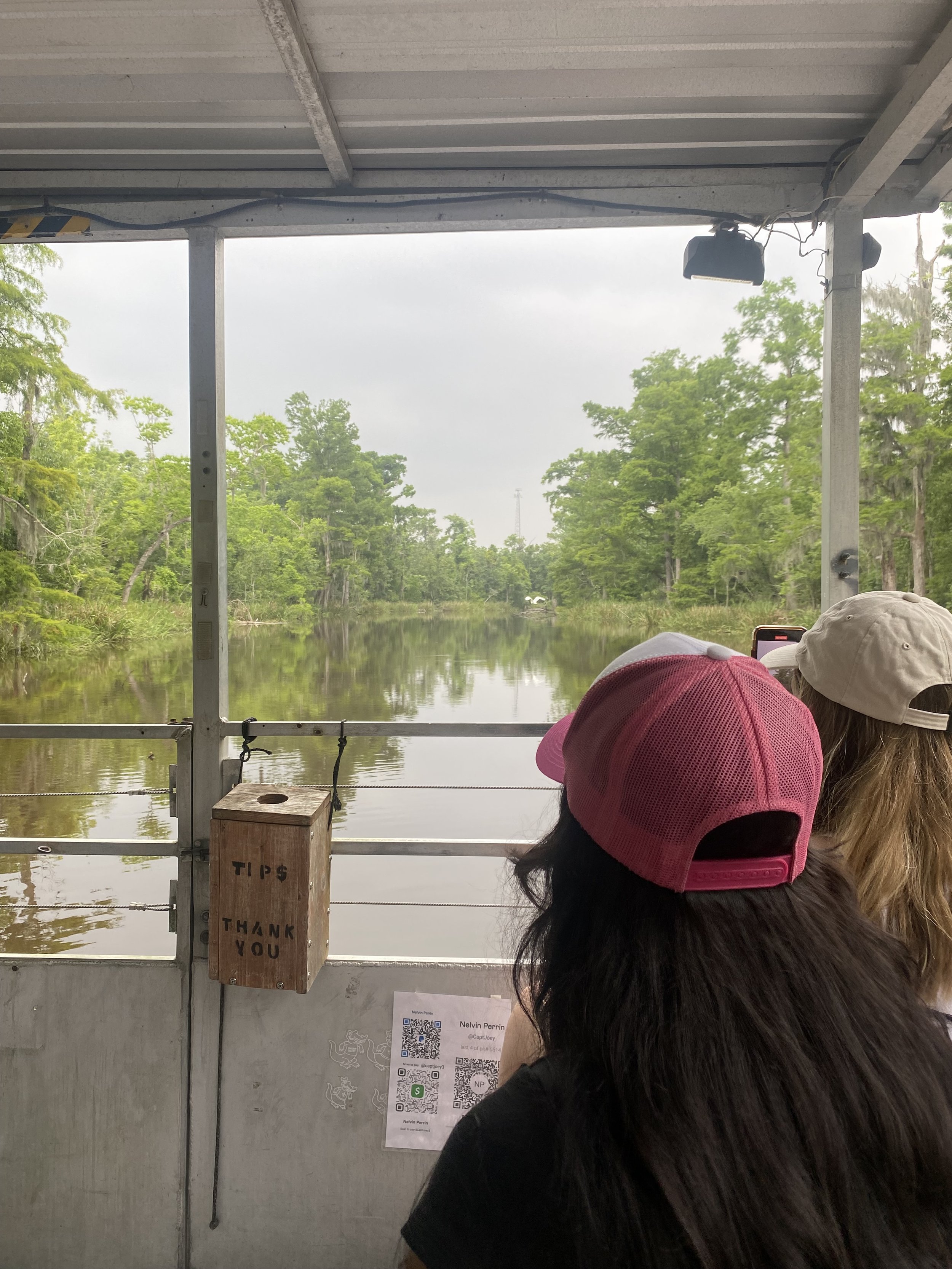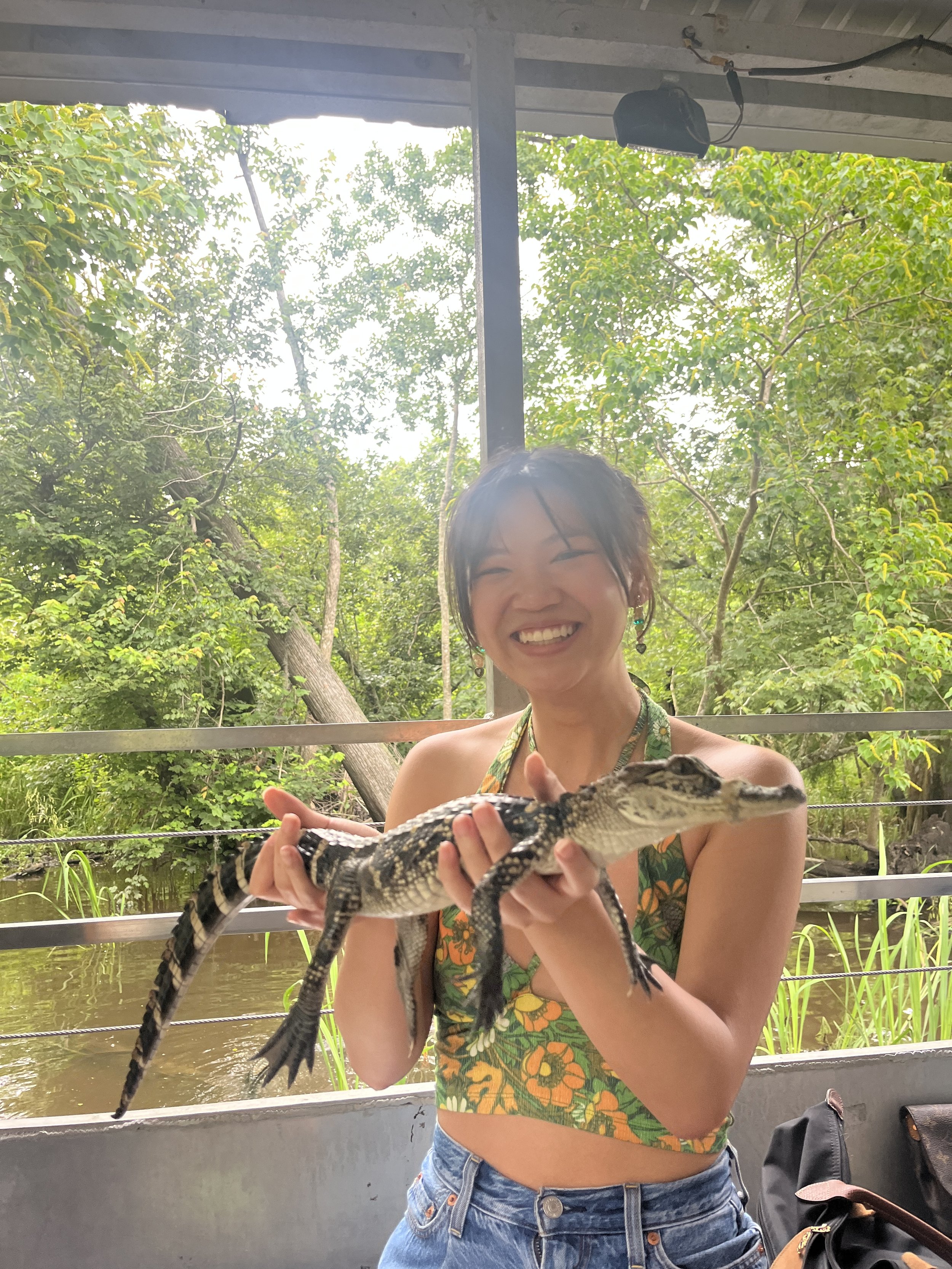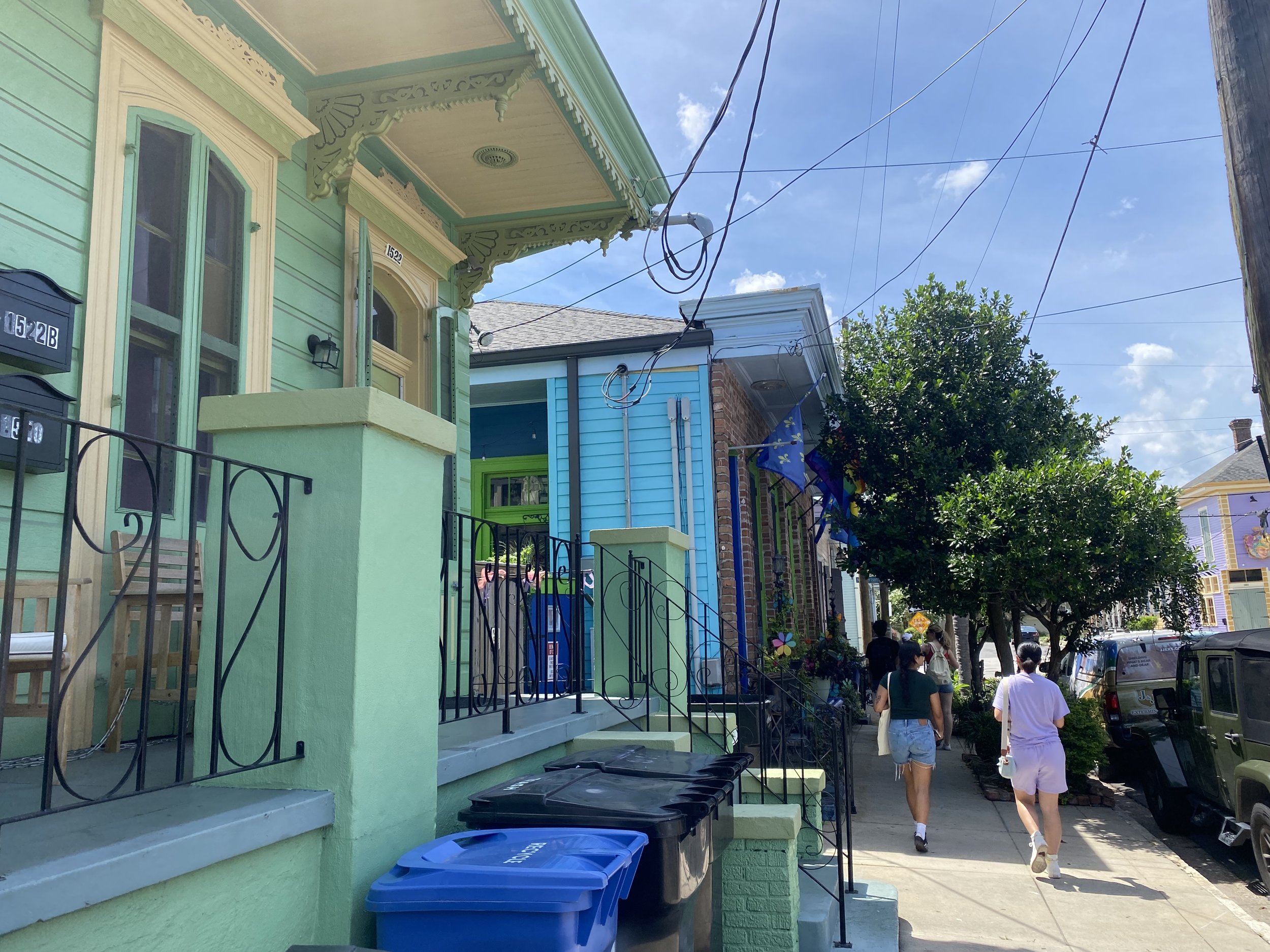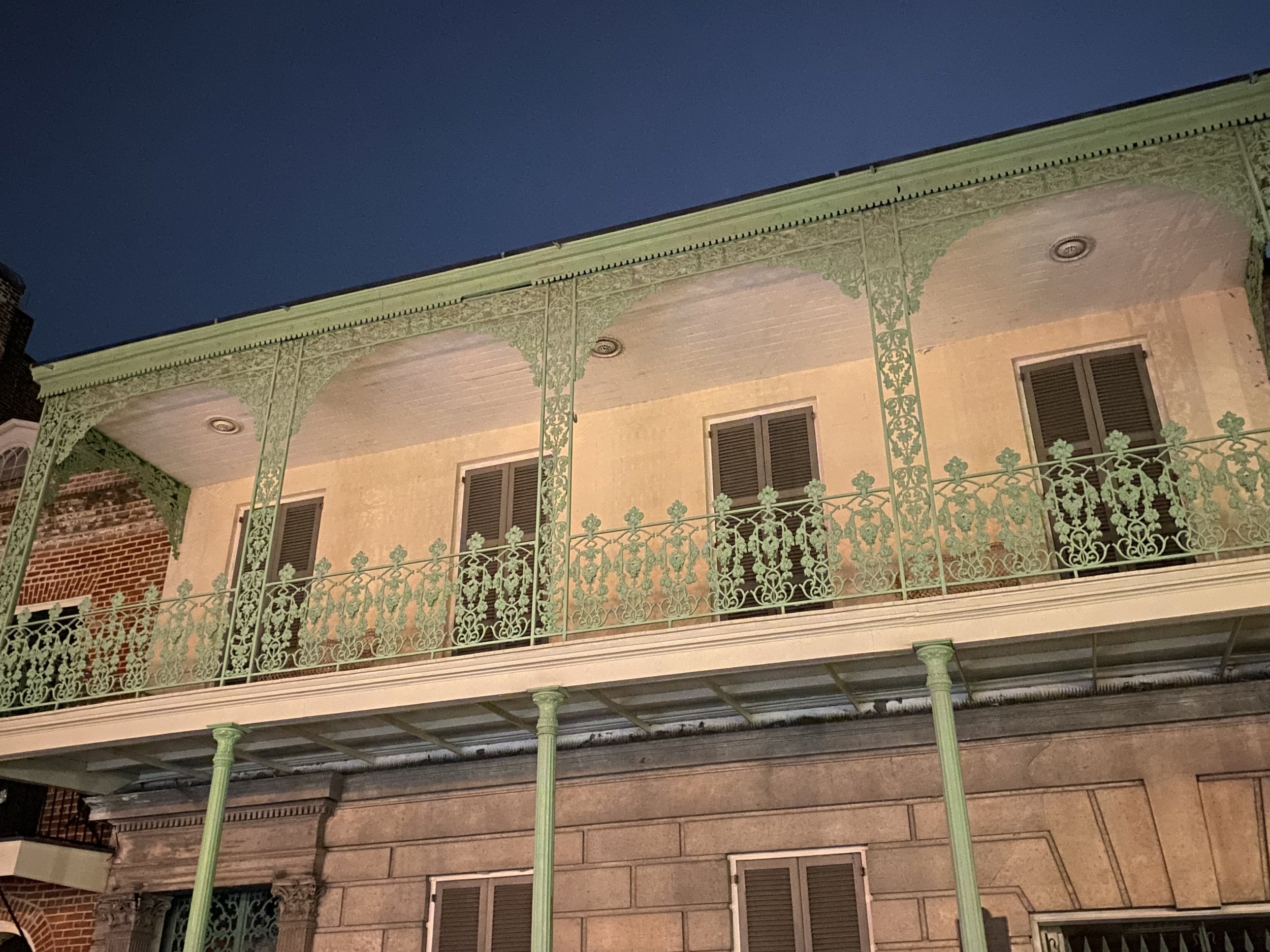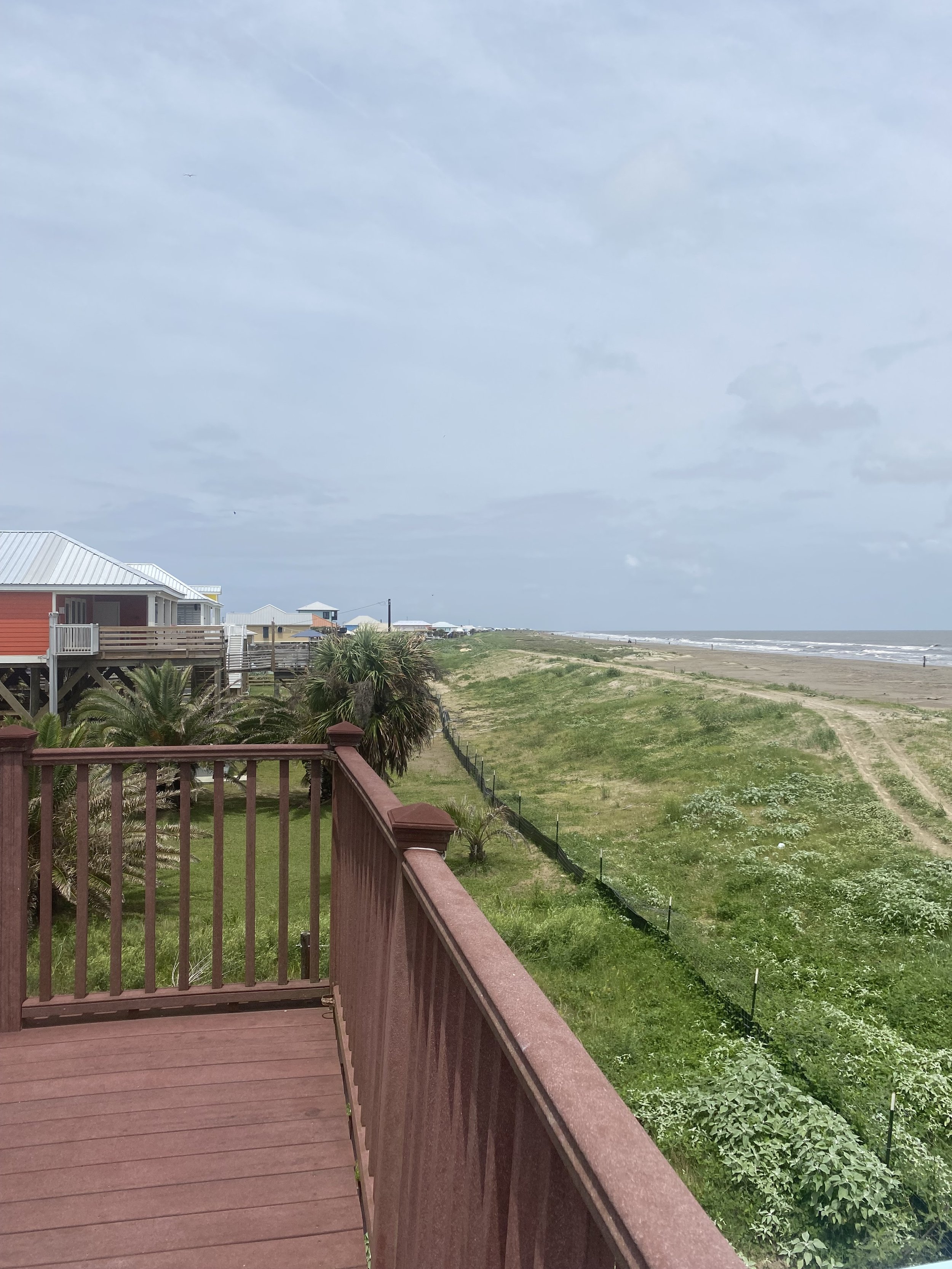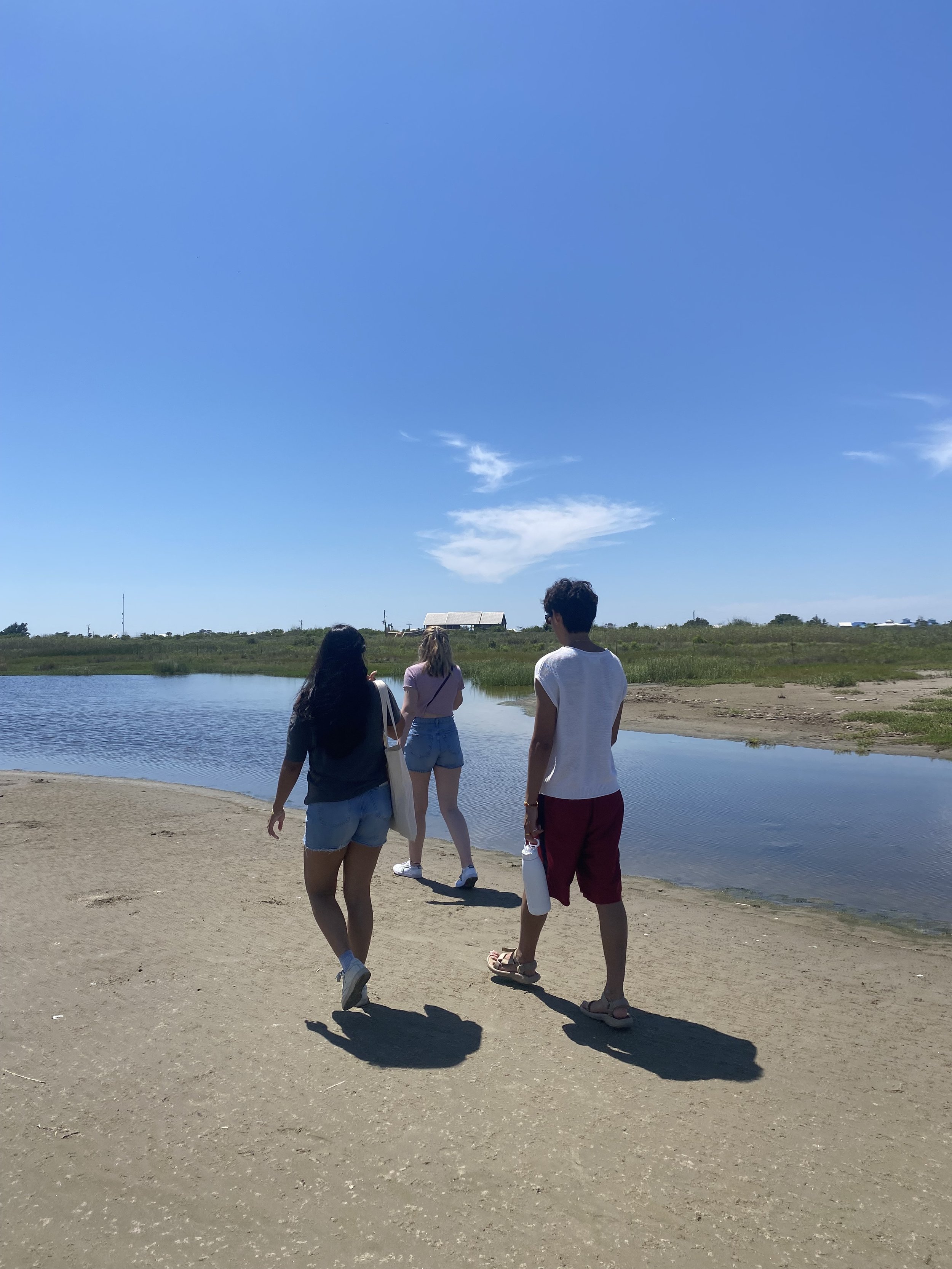I’ve completely overdone it. When I step onto the streetcar I’m instantly met with a variety of odd looks. I may as well have sprouted a third eye.
It’s my first time seeing The Rocky Horror Picture Show live in a theater, so I wanted to go all out. I spent nearly an hour in the hotel room excitedly smearing my face with powder and product, swiping electric blue over my eyelids, lining my lips in dark brown, and painting on arching, doll-like eyebrows. But now I’m starting to regret it, feeling silly and clownish as I sit in shameful silence on the streetcar ride to the Prytania Theater. It’s only a fifteen-minute ride, but it feels like hours.
But as my friends and I get off the streetcar and head down Prytania Street, our fellow moviegoers slowly start to trickle in—and it becomes apparent very quickly that we’ve been gravely upstaged. Bare skin is on display everywhere, peeking through fishnets or lingerie; glitter and cheap sequins flash in the dark; teeth and tongues glint against dark rouge lips. I’m embarrassed again, this time because I should have gone even further. I kick myself for leaving my corsets back in California.
Luckily, I forget about this pretty quickly; Rocky Horror is not the kind of movie for reflection or self-consciousness. It’s a movie for dancing, for screaming, for being loudly, obnoxiously naughty—and I can’t think of a more fitting place to enjoy all of its outrageousness than here at the Prytania.
Rocky-inspired makeup
The Prytania
Rocky Horror virgins!
““Ignatius ate his current popcorn and stared raptly at the previews of coming attractions. One of the films looked bad enough, he thought, to bring him back to the Prytania in a few days.””
The Prytania is famous for being the oldest theater in New Orleans, as well as the theater where Ignatius Reilly, the notorious protagonist of A Confederacy of Dunces, frequently goes to masochistically grumble about the “degenerates” onscreen. Ignatius would be beyond horrified to witness the wickedly delightful ribaldry of Rocky Horror, to see all of these flamboyant, scantily-clad youths gyrating down aisles, flinging rice at each other, howling irreverently—although he might grudgingly agree with their crude assessment of Barry Bostwick (asshole!) and Susan Sarandon (slut!). It’s a spectacle that’s certainly not for the faint of heart, or the faint of valves. But it’s also a spectacle that you just can’t look away from; as Ignatius tells his mother, “We must stay to watch the corruption.”
““When my brain begins to reel from my literary labors, I make an occasional cheese dip.””
Me too, Ignatius, me too
Rocky Horror sums up so much of what’s so great and so damning about this city, ridiculous and excessive and overindulgent. It’s my last week in New Orleans, and so I resign myself to indulging all of my vices. Ignatius bumbles through A Confederacy Of Dunces gorging himself at every opportunity, plowing through pastries and steaks and popcorn and hot dogs. Reading the book I laughed at his gluttony, but I’ve become all too familiar with it now—how can you come to New Orleans and not make a pig of yourself?
Almost everything I’ve had to eat here has been both excellent and plentiful. Portion sizes in New Orleans are gargantuan, but I hardly notice because I clean my plate every time. I fret to my sister over the phone about how many pounds I’ve put on, how my waistline must have expanded at least three inches. But in spite of my complaining, I wouldn’t dream of trading in those few pounds for all of the incredible food I’ve gotten to enjoy. If I began to list every delicious thing I’ve eaten on this trip I’d run out of space, but I have to give special praise to the beignets at Cafe Du Monde, and the “All That Jazz” po boy at Verti Marte—a glorious sandwich stuffed with ham, turkey, shrimp, cheese, mushrooms, tomatoes, and Verti Marte’s ‘Wow Sauce’ (accurate to its name!). Ignatius has an infamously insatiable appetite, but I have to imagine that if there was ever a sandwich that could satisfy him, it’d be this one. Possibly more than anything else, I’m going to miss the food here dearly.
““That’s what’s so wonderful about New Orleans. You can masquerade and Mardi Gras all year round if you want to. Really, sometimes the Quarter is like one big costume ball.””
Em and I drinking our blood bags
I’ve fallen in love with this city in all its excessive eccentricity. This is a city where people day-drink and dance through Jackson Square toting enormous, obnoxiously bright green Hand Grenade cocktails. It’s a city where shamelessly drunk idiots stumble down Bourbon Street dangling Mardi Gras beads at women, shouting for them to lift their shirts. It’s a city where people dress up as vampires and witches and everything in between. Ignatius hates the overindulgence that’s all around him, but partakes in it just the same; it’s impossible not to! As I’ve written before in a previous blog, where else? Where else can you drink “blood bags” at vampire-themed bars, gain five pounds off of po boys and beignets, spend entire days strolling aimlessly and gorging all of your senses? Where else, where else, where else?
A very indulgent collection of memories
““Now that Fortuna had saved him from one cycle, where would she spin him now? The new cycle would be so different from anything he had ever known.””
As my time in New Orleans rapidly dwindles to an end, I’m struck by how fast this month went by. But having spent all of this time indulging myself, I feel satisfied; I feel full, content. I think of Ignatius and Myrna riding off in the car together on the very last page of A Confederacy of Dunces, leaving New Orleans behind, and how Ignatius—perhaps for the first time in the entire novel—is overwhelmed by a profound gratitude. I’m grateful too, for this trip, these people, this remarkable city. Until we meet again in the next cycle.
Ignatius and I, signing off





















